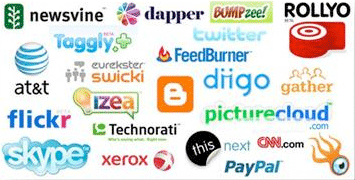
As the use of social media in education increases, so does the argument for and against. The purpose of this article is to try and take a balanced view of both sides of the coin and also to look at some of the reasons why schools won’t engage using social media. In order to achieve this, Matt Britland and Alan Mackenzie have collaborated, with Matt looking at the curriculum aspects, and Alan looking at any e-safety aspects.
The first step to understanding some of the issues was to create and Tweet out a link to a survey of 10 simple questions, the results of which were all saved to a Google Docs spreadsheet. Then, a further Google Doc was created to collaboratively write the article.

For the past six months I have become a fan of Twitter. It has enabled me to network very freely with other like minded teachers and educators around the world. This can enable you to spread information very quickly on what is happening now or at a particular moment. It is an excellent resource to spread information, especially if you have updated your blog and are looking for instant readership. It is a great use of technology and is something I have found to be a great source of learning and enjoyment.
The BBC reported that Scottish teachers are being warned that their use of social networking sites could put their careers at risk. The Scottish Secondary Teachers Association believes teachers can reveal too much personal information on sites such as Facebook and Twitter.

Twitter can easily be dismissed as a waste of time in the secondary school classroom. Students will get distracted. Students will see tweets they shouldn't at their age. How does one manage a room full of Tweeple without mobile phones? Is it even appropriate for years 7 and 8?
Here's some ammunition for what often turns into a pitched, take-sides verbal brawl as well-intended teachers try to come to a compromise on using Twitter (in fact, many of the new Web 2.0 tools-- blogs, wikis, websites that require registrations and log-ins, discussion forums. You can probably add to this list) that works for all stakeholders:

Do you have a policy on how teaching staff should present themselves online? This article includes an ICT code of conduct with rules about online communication for school staff. It also refers to official guidance and a clause in the GTCE code of conduct which covers teachers’ behaviour.
Hellingly Community Primary School in East Sussex has an ICT code of conduct for staff. It sets out the rules that all staff must comply with when using ICT facilities both within the school and away from the school.
The section covering online communication includes statements such as:

‘Web 2.0’ is a term familiar to all teachers. Stated in its simplest form, it’s the set of interactive internet-based tools used by students to enrich educational opportunities. ‘Web 1.0’ referred to the act of accessing websites—nothing more. Students read websites, clicked a few links, and/or researched a topic.
Web 2.0—Web-based education basics--includes blogs, wikis, class internet homepages, class internet start pages, twitter, social bookmarks, podcasting, photo sharing, online docs, online calendars, even Second Life—all tools that require thoughtful interaction between the student and the site. For teachers, it’s a challenge to keep up with the plethora of options as the creative minds of our new adults stretch the boundaries of what we can do on the internet.

A community-driven platform for showcasing the latest innovations and voices in schools
Pioneer House
North Road
Ellesmere Port
CH65 1AD
United Kingdom